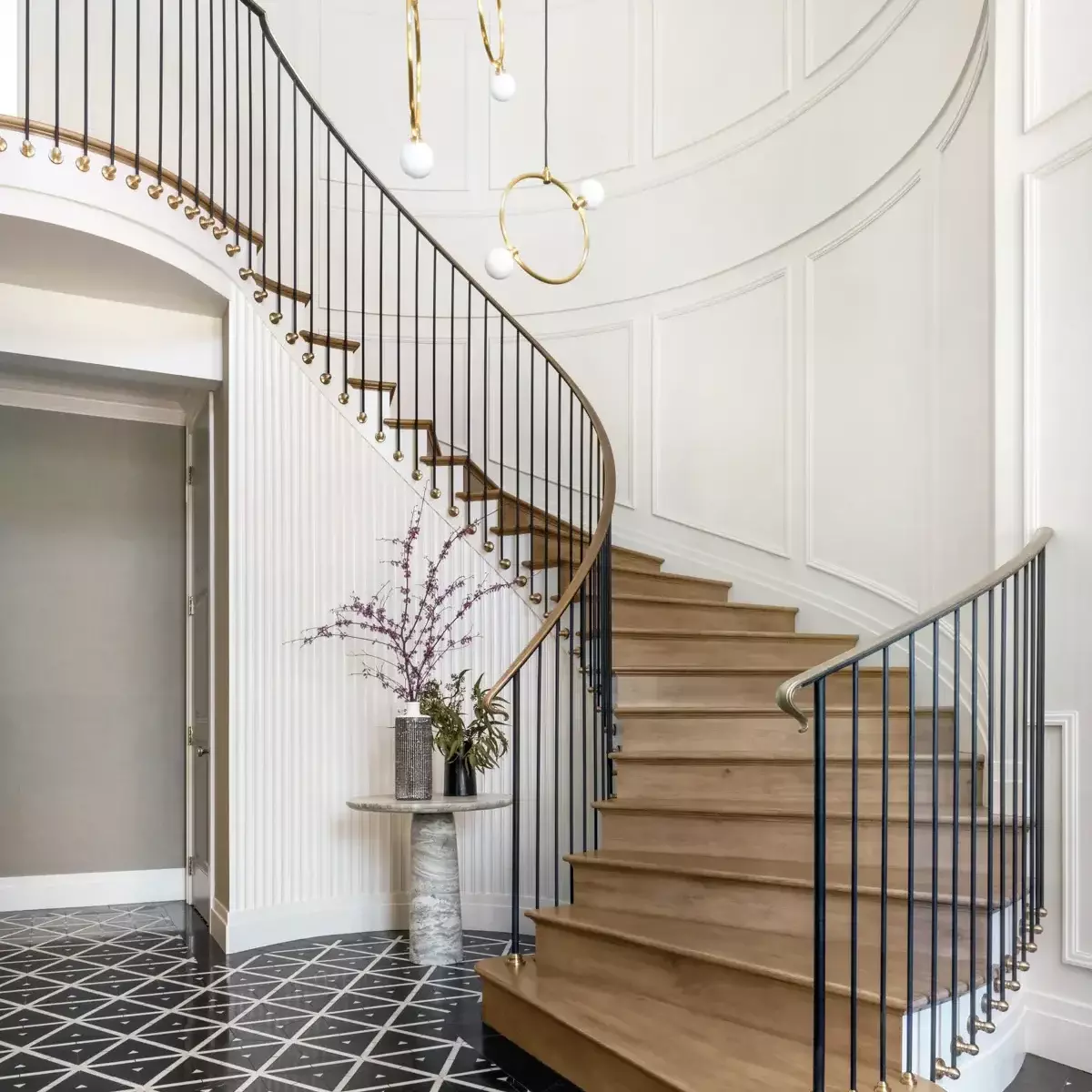Woodgrain introduces the New Colonial interior design style, a contemporary twist on the traditional American Colonial-inspired style. While staying true to classic colonial architecture, New Colonial design incorporates modern elements to create a renewed aesthetic. This style embraces warm, earthy tones along with charming colors like blue and green. Instead of using bright accents, New Colonial focuses on wood and subtle contrasts in patterns and textures, resulting in a seamless fusion of traditionalism and contemporary design.
What Is the New Colonial Interior Design Style?
New Colonial interior design draws inspiration from the design and architecture prevalent during the colonial times, dating back to the late 16th to 18th centuries. It pays homage to the classic colonial era while incorporating contemporary touches. The color palette favors earthiness, featuring warm, pleasant tones and a mix of blues and greens. The style utilizes wood and other earthy materials such as wicker, stone, brick, clay, wrought iron, and copper. The result is a timeless design that exudes elegance and sophistication.
 Photography by David Duncan Livingston
Photography by David Duncan Livingston
Key Characteristics of New Colonial Interior Design
Earthy Tones & Materials
Unlike the predominantly white and monochromatic features of traditional colonial style, New Colonial embraces color. Dark shades reminiscent of earth tones take center stage, creating a warm and inviting atmosphere. In addition to using earthy colors, New Colonial incorporates materials such as wood, wicker, stone, brick, clay, wrought iron, and copper, adding a touch of natural beauty to the space.
Hardwood Floors
Just like traditional colonial style homes, New Colonial design calls for hardwood floors. When choosing the perfect hardwood floor for your space, consider factors such as the type of finish, wood species, and installation method. Classic colors like oak, maple, walnut, and cherry are timeless options. Opting for wider planks (4” to 6”) gives your floors a fresh and contemporary look, while intricate designs like herringbone, parquet, or chevron patterns add a touch of uniqueness.
Lighting
Lighting plays a vital role in achieving the perfect New Colonial design. Instead of sticking to traditional colonial lighting fixtures, opt for more artistic and eclectic pieces that bring a fresh and modern feel. By updating traditional components with contemporary versions, you can create a unique atmosphere. Pendant lamps, visually pleasing wall sconces, and modern chandeliers are excellent choices for adding a touch of contemporary elegance. Remember to let your personality shine through your lighting choices and have fun.
Paneling, Moulding, & Columns
Paneling, moulding, and columns are classic features that seamlessly blend with contemporary New Colonial design. Update traditional wooden churned spindles on the staircases with wrought iron or modern railings for a fresh look. Adding crown moulding, intricate base moulding, chair rail, and panel moulding instantly elevates the luxurious feel of your space. Columns provide an opportunity to incorporate natural materials like wood, paying homage to the classic architecture of traditional colonial design.
Wallpaper & Decor
In New Colonial themed rooms, intricate patterns like stripes, herringbone, toile, gingham, damask, and chintz adorn the walls. These wallpaper choices add a decorative element and accentuate the architectural features of your home. New Colonial design favors sleek lines, organized space, and a balance of symmetry, creating a clean and refreshing look with a contemporary form of elegance.
New Colonial interior design is a timeless classic that combines the best of traditional and modern elements. By using traditional colonial components in their current form, this style achieves a fresh and updated aesthetic. While there are prominent characteristics of New Colonial design, customization based on personal taste is encouraged. The rules provide guidance to new designers but are not set in stone.
For inspiration and ideas, check out our New Colonial Homes Pinterest board. Remember to follow us on Instagram and Facebook @WeAreWoodgrain for more design inspiration!









